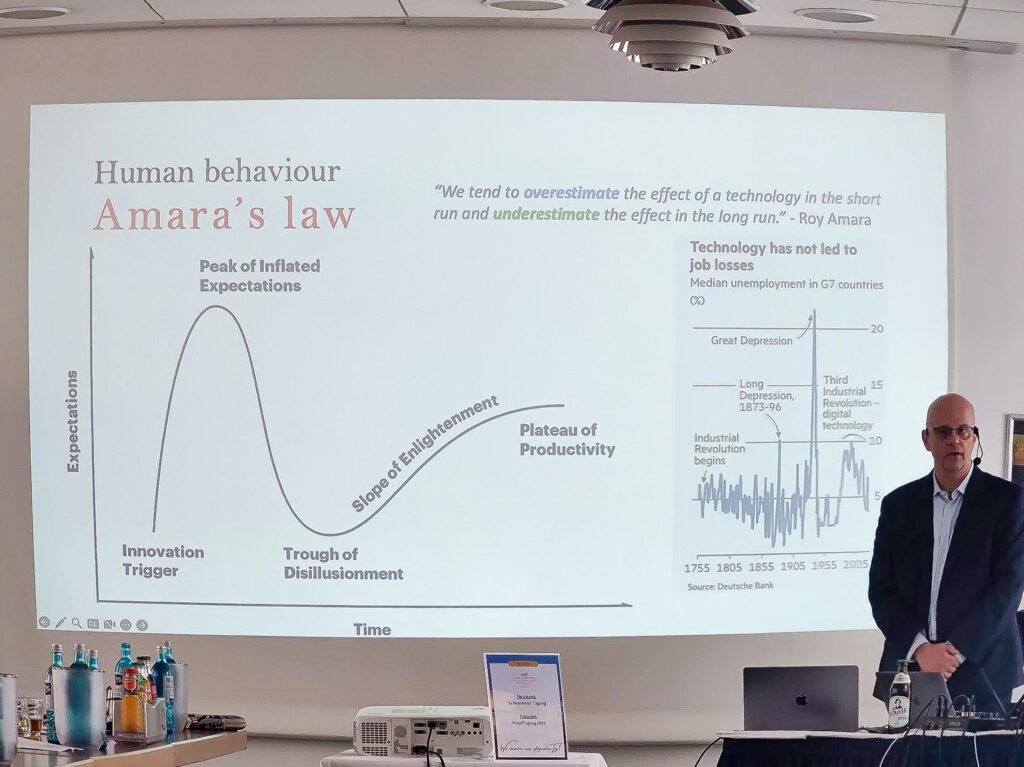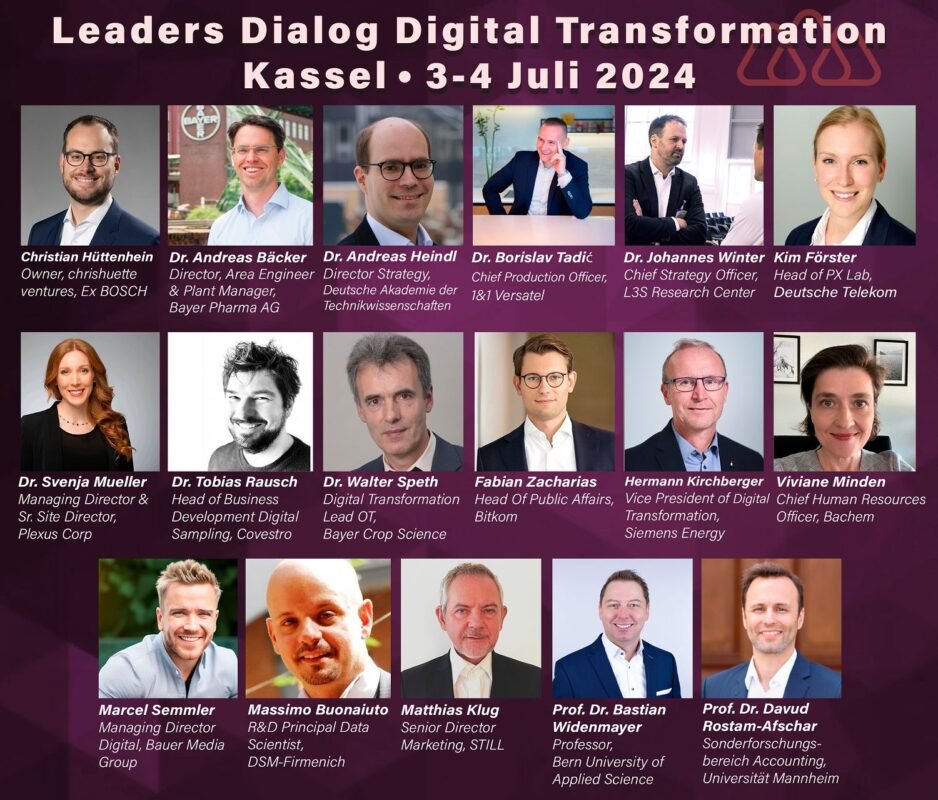I will be a lead speaker at the “LET’S TALK” event, 31 October 2024 | Zurich, Switzerland.
AI – This Time is Different!? Implications for the World of Work
For years, we’ve explored the rapidly shifting dynamics of work under Industry 4.0, characterized by new ways of working, digital transformations, and the rise of innovative leadership. The future workplace will undoubtedly look vastly different from today’s. Since the advent of accessible AI technologies like ChatGPT, the speed of digital transformation has skyrocketed, fundamentally reshaping industries and workflows. But amid this technological revolution, one pressing question remains: which strategies truly drive success in today’s organizations?
In both professional and personal circles, key questions continue to spark debate:
- Will human roles remain essential in the future workplace?
- Which professions are most vulnerable to AI-driven automation?
- What key challenges must be tackled to integrate AI profitably and effectively within our organizations?
- What are the critical success factors, and what common pitfalls should we avoid when leveraging AI to its full potential?
As we stand on the brink of this new era, the answers to these questions will define the future of work.
Dalith Steiger and Massimo Buonaiuto, two renowned experts in the field of artificial intelligence and internationally sought-after speakers, will be in Zurich on 31 October 2024 to shed light on the opportunities, risks and dangers of AI, the current possibilities and challenges, from the following perspectives.
 Dalith Steiger-Gablinger (Venture Partner, AI Strategist, Innovator, Keynote Speaker, Co-Founder SwissCognitive) will focus on the ‘interface’ between people and technology and highlight the opportunities beyond the risks: she addresses concerns and fears, shows how AI is successfully introduced into the corporate world in practice and which principles must be observed in order to be able to use the opportunities offered by AI. She says: “AI IS MORE THAN JUST TECHNOLOGY!”
Dalith Steiger-Gablinger (Venture Partner, AI Strategist, Innovator, Keynote Speaker, Co-Founder SwissCognitive) will focus on the ‘interface’ between people and technology and highlight the opportunities beyond the risks: she addresses concerns and fears, shows how AI is successfully introduced into the corporate world in practice and which principles must be observed in order to be able to use the opportunities offered by AI. She says: “AI IS MORE THAN JUST TECHNOLOGY!”
![]()
Massimo Buonaiuto (Director AI at EPAM, AI-Transformation Leader from the very beginning) will highlight the real risks we face. He will explore what society, business leaders, managers, and employees must focus on to avoid being overwhelmed by these advancements, and instead play an active role in shaping the future. Massimo will reveal the hidden dangers and the radical changes that will happen in AI-First companies, especially in recruitment processes, impact of AI automation on Corporate Organizational Structures, talent mismatching and the challenges of team working with AI agents… He states: Generative AI – This time it’s different! Be the revolution!
The organizer: https://www.schluchterlicci.ch/e/company/
Venue:
Doors open at 4:15 p.m.









































